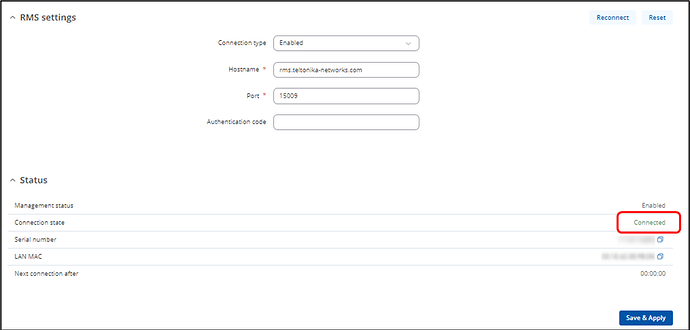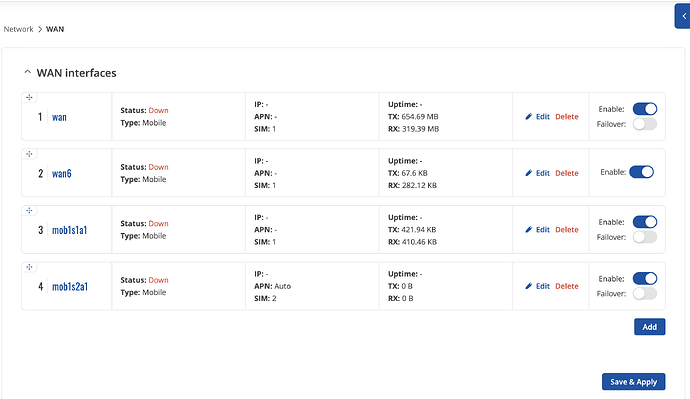I had RMS access on the LAN port and I needed to change the DHCP IP range from .2 - .9 to .2- .10 . After changing the range I immediately lost access to RMS and too all the other devices on the router. Does anyone know why this would happen?
Hello,
Changing the DHCP IP range shouldn’t cause these issues.
Can you connect to the router via cable and access the WebUI? If so, navigate to Services > Cloud Solutions and check the router’s connection status to RMS. If it is connected, the router most likely has internet access, and any device connected to its LAN should also have internet access.
I suspect there may be DNS issues in this case. Could you check if your device can access web pages, such as www.google.com? If that doesn’t work, it’s possible that your devices have lost their DNS addresses, preventing access to RMS via the domain name.
To summarize:
- Verify internet connectivity by pinging an IP address like 8.8.8.8.
- Confirm if the device is connected to RMS.
- Try accessing www.google.lt to ensure that DNS is correctly configured and your devices can access websites using domain names.
Kind regards,
Lukas
We don’t have access to connect the router via hardwired cable at this time. Is there any way we can use the public IP of the WAN network, to access the router remotely?
I think one of the key issues is that remote access for the SSH, HTTP, HTTPS and Telnet ports was not enabled, at the time of setup.
We were able to power cycle the router and what I saw was that the RMS management system came back up. Checking the RMS settings on the router, it did look as the screenshot you provided.
One issue that I’m seeing is that changing the DHCP IP range seemed to have caused the WAN and Mobile ports to go down, even though no settings were changed here. I do see the LAN interface as active. Is there a specific setting that is causing this?
For some context, this particular router is using the MOB1s1a1 mobile interface, with SIM 1 for cellular network. The devices we are trying to have access the internet are on the LAN ports: eth0 and eth1
ETH0 represents the bridged switch ports of the router, covering LAN ports 1-3, while ETH1 is the dedicated 4th LAN port, typically used for a wired WAN connection. If a LAN device is connected to ETH1, it may not function as expected unless specifically configured. Once configured, it should work as intended.
From your screenshot, it appears that the first two interfaces are configured for mobile connectivity and set to use SIM 1, similar to mob1s1a1. There might be a potential conflict between the interfaces with this setup. Could you try disabling any interfaces that are not in use?
If possible, could you provide further details about the specific configuration, along with a network topology illustrating how everything is connected? This would help me better understand the setup and assist in identifying where the issue might be.
Any additional information to help visualize the setup would be greatly appreciated.
Kind regards,
Lukas
This topic was automatically closed after 15 days. New replies are no longer allowed.


